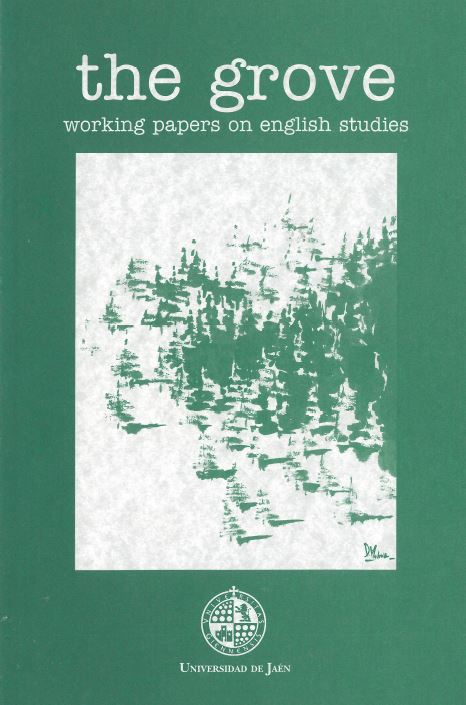The Tragic Mulatta and Storytelling in Their Eyes Were Watching God
Abstract
The figure of the tragic mulatta placed its origin in antebellum literature and was extensively used in the literature of the nineteenth and twentieth century. Much has been written about this literary character in a time when the problem of miscegenation was at its highest point, and when studies established that races were inherently different, meaning that the black race was inferior to the white one. Many authors have made use of this trope for different purposes, and Zora Neale Hurston was one of them. In her novel Their Eyes Were Watching God, Hurston creates Janie, a mulatta that a priori follows all the characteristics of this type of female character who, however, breaks away from most of them. She overcomes all stereotypes and prejudices, those imposed on her because of her condition of interracial offspring, and is able to take charge of her own life and challenge all these impositions feeling closer to her blackness and celebrating and empowering her female identity. In this vein, storytelling becomes the liberating force that helps her do so. It will become the tool that will enable her to ignore the need of passing as a white person and provide her with the opportunity to connect with her real identity and so feel free and happy, breaking with the tragic destiny of mulatta characters.
Keywords: storytelling, tragic mulatta, blackness, Hurston.
Downloads
References
Works Cited
Bryant, Jerry H. Born in a Mightily Bad Land. The Violent Man in African American Folklore and Fiction. Bloomington: Indiana UP, 2003. Print.
Caputi, Jane. “Specifying” Fannie Hurst: Langston Hughe’s Limitations of Life, Zora Neale Hurston’s Their Eyes Were Watching God, and Tony Morrison’s The Bluest Eyes as ‘Answers’ to Hurst’s Imitations of Life.” Black American Literature Forum 24:4 (1990): 697-716.
Christian, Barbara. Black Women Novelists: The Development of a Tradition, 1892-1976. Westport: Greenwood, 1980. Print.
Donlon, Jocelyn H. “Porches: Stories: Power, Spation and Racial Intersections in Faulkner and Hurston.” Journal of American Culture 19.4 (1996): 95-110. Print.
Ferguson, Sally. “A Folkloric Men and Female Growth in Their Eyes Were Watching God.” Black American Literature Forum 2.1. (1987): 185-197. Print.
Hurston, Zora N. Their Eyes Were Watching God. New York: HarperPerennial ModernClassics, 2006. Print.
Kaplan, Carla. “The Erotics of the Talk: That Oldest Human Longing in Their Eyes Were Watching God.” American Literature 67:1 (1997): 115-142. Print.
Kubitschek, Missy D. “Tuh De Horizon and Back.” The Female Quest in Their Eyes Were Watching God.” Black American Literature Forum 17:3 (1983):109-115. Print.
Leeming, David, and Jake Page. Myths, Legends and Folktales of America. An Anthology. Oxford: Oxford UP, 1999. Print.
Marks, Donald R. “Sex, Violence, and Organic Consciousness in Zora Neale Hurston’s Their Eyes Were Watching God.” Black American Literature Forum 19:4 (1985): 152-157. Print.
Pereira, Malin. Embodying Beauty: Twentieth Century American Women Writer’s Aesthetics. New York: Garland Publishing Inc., 2000. Print.
Raimon, Eva A. The Tragic Mulatta Revisited: Race and Nationalism in Nineteenth Century Antislavery Fiction. New Brunswick: Rutgers UP, 2004 Print.
Rutledge, Gregory E. “From Tragic Mulatta to Grotesque Racial Horror:
Epic/Exceptionalism and Larsen’s Quicksand. Journal of African American Studies 20:75 (2016):75-98. Print
Tate, Claudia. Domestic Allegories of Political Desire: the Black Heroine’s Text at theTurn of the Century. New York: Oxford UP, 1992. Print.
Downloads
Published
How to Cite
Issue
Section
License
Authors who publish with this journal agree to retain copyright and grant the journal right of first publication with the work simultaneously licensed under a Creative Commons Attribution License that allows others to share the work with an acknowledgement of the work's authorship and initial publication in this journal. Also, authors will retain the rights on their work, even if they will be granting The Grove. Working Papers on English Studies a non-exclusive right of use to reproduce, edit, distribute, publicly communicate and show their work. Therefore, authors are free to engage in additional, independent contracts for non-exclusive distribution of the works published in this journal (such as uploading them to an institutional repository or publishing them in a book), as long as the fact that the manuscripts were first published in this journal is acknowledged.
















